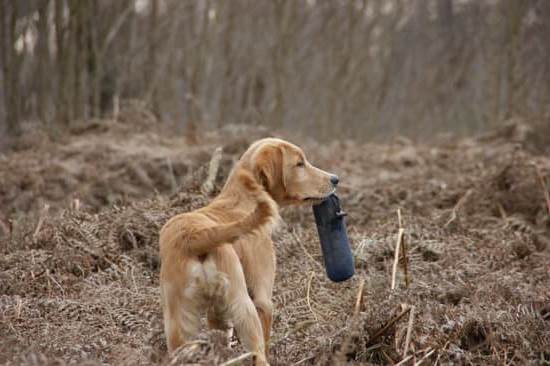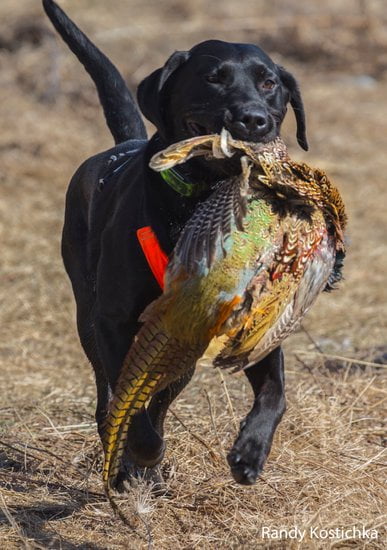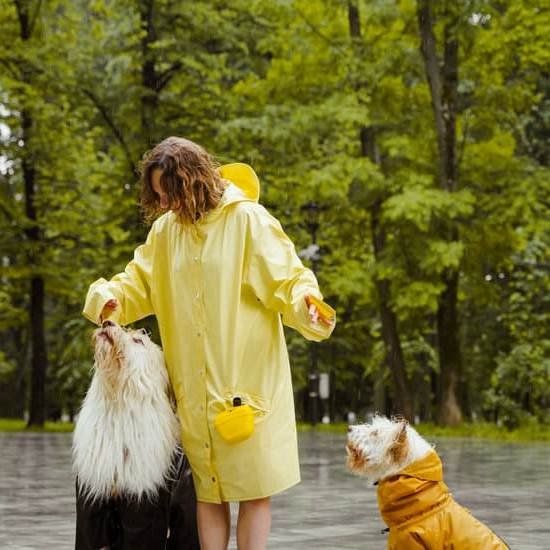Do you ever feel like your dog knows when you’re feeling down or anxious? Dogs have a remarkable ability to pick up on their owner’s emotional state, and it’s not just a coincidence. In this article, we will explore the importance of training your dog to notice anxiety and the positive impact it can have on your relationship.
Dogs are incredibly intuitive animals, and they can sense changes in our behavior and body language that may indicate anxiety or stress. By learning how to recognize these signs in our dogs, we can better understand their needs and provide support when they need it most.
In the following sections, we will discuss the signs of anxiety in dogs, how they detect anxiety through their natural instincts and sensory perception, as well as effective training techniques and practice exercises to teach your dog to pick up on your anxiety cues. Let’s delve into the fascinating world of canine communication and learn how to strengthen the bond with our furry friends by helping them notice and respond to our anxiety.
Signs of Anxiety in Dogs
As a pet owner, it is important to recognize the signs of anxiety in your dog. Common signs of anxiety in dogs include excessive barking, destructive behavior, shaking or trembling, and pacing. Other noticeable signs may include panting, drooling, and attempting to escape. It is crucial to pay attention to these signs as prolonged anxiety can lead to health issues and behavioral problems in dogs.
In addition to these physical behaviors, there are also subtle cues that can indicate anxiety in dogs. These can include yawning when not tired, lip licking when not eating or hungry, and avoiding eye contact. By being mindful of these signals from your dog, you can better assess their emotional state and take steps to address their anxiety.
Understanding the signs of anxiety in dogs is the first step in helping your furry friend feel more at ease. By recognizing when your dog is anxious, you can then take proactive measures to alleviate their stress and create a more comfortable environment for them. Additionally, being aware of these signs can also help you identify any underlying issues that may be causing your dog’s anxiety.
| Signs of Anxiety | How to Recognize |
|---|---|
| Excessive barking | Notice if it occurs frequently and without reason |
| Destructive behavior | Look for evidence of chewing on furniture or personal items |
| Pacing or shaking/trembling | Observe if your dog seems restless or nervous |
How Dogs Detect Anxiety
Dogs are known for their strong intuition and ability to detect changes in their owner’s behavior. When it comes to anxiety, dogs have a natural instinct to notice when something is off with their human companions. This ability stems from a dog’s heightened sensory perception, particularly their acute sense of smell and ability to pick up on subtle body language cues.
A dog’s sense of smell is approximately 10,000 to 100,000 times more acute than humans. This means that they can detect changes in hormones and pheromones that are released when a person is feeling anxious or stressed. Additionally, dogs are highly attuned to their owner’s body language and vocal cues, allowing them to pick up on signs of tension or nervousness.
Through the training process, it’s important for dog owners to understand how their canine companions naturally detect anxiety. By recognizing the unique sensory abilities of dogs, owners can effectively teach their pets to respond to their emotional state and provide comfort when needed. With the right training techniques and positive reinforcement, dogs can become valuable support animals for individuals dealing with anxiety or stress.
| Dog’s Sensory Perception | Natural Instincts |
|---|---|
| Acutely sensitive sense of smell | Ability to detect changes in hormones and pheromones related to anxiety |
| Attunement to body language and vocal cues | Recognizing signs of tension or nervousness in their owners |
Training Techniques
Teaching your dog to notice your anxiety cues can be a beneficial skill for both you and your furry friend. One effective training technique is to use positive reinforcement to encourage your dog’s alertness to your emotional state.
This involves rewarding your dog when they correctly identify and respond to your anxiety signals. By associating their recognition of your anxiety with a reward, such as treats or praise, you can reinforce this behavior and strengthen the bond between you and your pet.
Another training method is desensitization, which involves gradually exposing your dog to situations that trigger anxiety in you while teaching them how to respond calmly. For example, if you become anxious in crowded places, you can gradually expose your dog to similar environments and positively reinforce their calm behavior. Over time, this can help them learn to recognize and respond appropriately to your anxiety cues in real-life situations.
Consistency is key when training your dog to pick up on your anxiety cues. Use clear signals and commands that are easy for your dog to understand so that they can consistently recognize when you are feeling anxious.
It’s important to practice these signals regularly with your dog in various settings, as repetition will help them become more adept at identifying and responding to your anxiety cues in different situations. By employing these training techniques, you can effectively teach your dog how to notice and respond sensitively when you are experiencing anxiety.
Positive Reinforcement
When it comes to training your dog to notice anxiety, positive reinforcement is a crucial aspect of the process. By using rewards, you can encourage your dog’s alertness to your emotional state and reinforce their ability to recognize when you are feeling anxious. There are several effective ways to utilize positive reinforcement in this type of training:
- Treats: One of the most common methods of positive reinforcement is offering your dog treats when they correctly pick up on your anxiety cues. Whenever your dog displays the behavior you are looking for, such as licking your hand or staying by your side, be sure to reward them with a small treat.
- Verbal praise: Alongside using treats, verbal praise can also be a powerful form of positive reinforcement. When your dog exhibits signs that they have recognized your anxiety, be sure to praise them with an enthusiastic “good job” or “well done.”
- Playtime: For some dogs, playtime may serve as an effective reward for noticing and responding to your anxiety cues. After they have successfully picked up on your emotional state, engage in a game or activity that they enjoy as a form of positive reinforcement.
Utilizing these methods consistently will help strengthen the connection between their recognition of anxiety and the positive outcome they receive as a result.
In addition to utilizing rewards for noticing anxiety cues, it is important to remain consistent with the timing and frequency of rewarding your dog. By consistently providing rewards when they display the desired behavior, you can effectively reinforce their sensitivity to your emotional state and create a stronger bond in the process. Remember that every dog is different, so it’s essential to find what motivates and reinforces their behavior effectively.
Practice Exercises
Teaching Basic Commands
Start by teaching your dog basic commands such as “sit,” “stay,” and “come.” These commands will form the foundation for more advanced training related to anxiety recognition. Be patient and consistent with your training, using positive reinforcement techniques to encourage your dog to understand and follow these commands.
Exposing Your Dog to Different Environments
Expose your dog to various environments and situations to help them become comfortable in different settings. Take them for walks in busy areas, visit parks, or even bring them along on car rides. This exposure will help desensitize your dog to different stimuli and improve their ability to pick up on subtle changes in your behavior when you are feeling anxious.
Practicing Controlled Reactions
Incorporate controlled reactions into your training exercises by simulating mild instances of anxiety. You can do this by acting slightly nervous or stressed while using the basic commands you have taught your dog. Reward them when they respond appropriately, such as coming over to comfort you or sitting calmly by your side. Gradually increase the intensity of these simulated scenarios as your dog becomes more adept at picking up on your emotional cues.
By engaging in these practice exercises with your dog, you can help them develop the necessary skills to notice and respond to your anxiety. Consistent training, positive reinforcement, and patience are key components of effectively teaching your dog how to recognize anxiety signals, ultimately strengthening the bond between you and your furry companion.
The Role of Communication
Dogs are incredibly intuitive creatures, and they have a natural ability to pick up on their owner’s emotions. However, as much as dogs can sense anxiety, it’s important for dog owners to establish clear signals and commands to help their furry friends recognize when they are feeling anxious. Effective communication is key in helping your dog understand how to respond to your emotional state.
To properly train your dog to notice anxiety, it’s crucial to start with establishing clear signals that will indicate when you’re feeling anxious. This can include verbal cues such as saying “It’s okay” or “I’m fine” in a soothing tone when you’re feeling calm, and using a different set of words or tone when you’re feeling anxious.
Non-verbal cues such as body language and hand signals can also be helpful in effectively communicating with your dog.
In addition to clear signals, it’s important to teach your dog specific commands that will prompt them to respond appropriately when they notice your anxiety. These commands could include actions such as coming over for comfort, fetching a designated item that provides relief, or simply sitting calmly by your side. Consistency is crucial in reinforcing these signals and commands so that your dog can confidently respond when you need them the most.
- Use verbal and non-verbal cues
- Teach specific commands for response
- Be consistent in reinforcing signals and commands
Real-Life Situations
At Home
Once you have successfully trained your dog to notice anxiety, it’s important to apply this training in everyday situations. At home, your dog can be a source of comfort and support when you are feeling anxious. Whether it’s pacing back and forth, pawing at you, or simply staying close by, your dog may exhibit signs of understanding and empathy. Reinforce this behavior by acknowledging and rewarding your dog for their attentiveness.
Out in Public
When out in public, it’s essential for your dog to continue recognizing your anxiety cues. Whether you’re at the park, running errands, or socializing with friends, your dog should be able to pick up on subtle changes in your body language or behavior.
Encourage this by consistently practicing commands and signals that indicate to your dog when you are feeling anxious. Using positive reinforcement techniques while out in public can help solidify their ability to recognize and respond to your emotional state.
During Social Gatherings
Social gatherings can be overwhelming for some individuals, causing anxiety to arise. In these situations, it’s crucial that your dog is attuned to your emotional needs. By incorporating the training techniques and communication skills that you’ve worked on together, you can ensure that your dog continues to provide support during these potentially stressful events. This may include giving them specific cues to stay close by or offering comfort if they sense that you are becoming anxious.
By implementing the training principles into real-life scenarios, you not only strengthen the bond between yourself and your canine companion but also provide yourself with an extra layer of emotional support during challenging times.
Maintaining a Healthy Bond
Training your dog to notice anxiety can greatly strengthen the bond between you and your furry friend. By teaching your dog to recognize and respond to your emotional state, you are establishing a deeper level of communication and understanding. This not only benefits your own mental well-being but also creates a stronger connection with your pet.
When you train your dog to notice anxiety, you are essentially building trust and empathy between you and your pet. Your dog learns to pay attention to your body language, tone of voice, and overall demeanor, which in turn allows them to offer comfort and support when you need it the most. This mutual awareness fosters a sense of companionship and reassurance, ultimately deepening the bond between you and your four-legged companion.
Moreover, having a dog that can notice and respond to your anxiety can have a positive impact on both of your overall well-being. Your pet becomes more than just a source of comfort – they become an active participant in helping you navigate through difficult emotions.
In turn, this strengthens the relationship by creating an environment of trust, understanding, and emotional support. As you continue to reinforce these behaviors through training and positive reinforcement, you are nurturing a healthier bond that benefits both you and your beloved pet.
Conclusion
In conclusion, training your dog to notice and respond to your anxiety can have numerous benefits for both you and your furry companion. By understanding the importance of dogs noticing anxiety and taking the time to recognize the signs of anxiety in dogs, you can develop a deeper bond and communication with your pet.
Through exploring a dog’s natural instincts and sensory perception, you can gain insight into how they detect anxiety, which can help you effectively train them to pick up on your anxiety cues.
Using positive reinforcement techniques and practicing exercises with your dog can further enhance their ability to notice anxiety, providing them with clear signals and commands for recognition. As you apply your dog’s training in real-life situations, from everyday scenarios to more challenging environments, you will strengthen the bond between you and your dog while also increasing their responsiveness to your emotional state.
Ultimately, having a dog who can notice and respond to your anxiety not only strengthens your relationship but also provides you with added support during times of distress. Your trained canine companion can offer comfort and reassurance, making it easier for you to manage your own anxiety. Thus, by investing time and effort into training your dog in this way, you are creating a mutually beneficial partnership that fosters a healthier and happier life for both of you.
Frequently Asked Questions
How Do I Train My Dog to Recognize Anxiety?
Training your dog to recognize anxiety involves creating positive associations with certain cues or behaviors. Start by rewarding your dog when they exhibit calm behavior around anxious stimuli and gradually build up to more intense situations.
Consistency is key, so be patient and persistent in your training efforts. It’s also important to work with a professional trainer if you’re unsure how to proceed, as they can provide expert guidance tailored to your dog’s specific needs.
How Do Dogs Show Anxiety?
Dogs show anxiety through various physical and behavioral signs such as trembling, excessive panting, pacing, restlessness, or avoidance behaviors. They may also exhibit destructive behavior or become clingy and seek constant reassurance from their owner. Understanding these signs is crucial in effectively addressing your dog’s anxiety and providing the necessary support.
What Do Dogs Do When They Sense Anxiety in Humans?
When dogs sense anxiety in humans, they may react by offering comfort through physical contact such as licking, nudging, or leaning against their owner. Some dogs may also become alert and vigilant, as if trying to protect their human from potential threats.
It’s important for dog owners to be aware of their own emotions and behavior when feeling anxious, as dogs are highly attuned to their owners’ emotional states. Being mindful of how you handle your own anxiety can greatly impact how your dog responds in similar situations.

Welcome to the blog! I am a professional dog trainer and have been working with dogs for many years. In this blog, I will be discussing various topics related to dog training, including tips, tricks, and advice. I hope you find this information helpful and informative. Thanks for reading!





